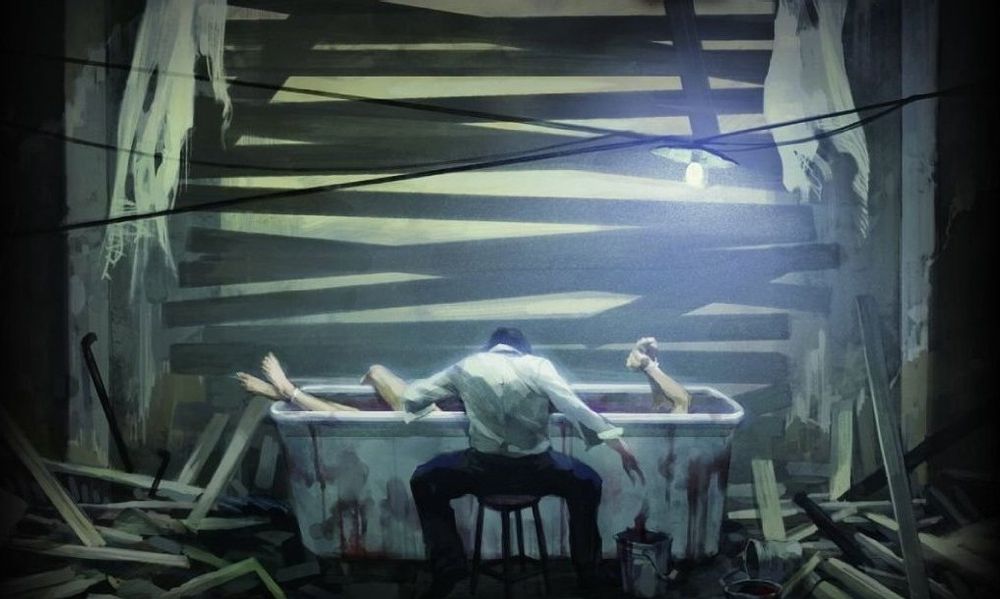
Hayarigami 2 (Officially known as 流行り神2警視庁怪異事件ファイル - Hayarigami 2 Keishicho Kaii Jiken Fairu — Tokyo Metropolitan Police Department Strange Case Files 2) is a Survival Horror Visual Novel game in the Hayarigami franchise made by Nippon Ichi and the sequel to the first Hayarigami game. It was not released outside of Asia.
It was first released for the Playstation 2 on November 15, 2007 with a "Best Price" version released on June 18, 2009. The PSP port, known as Hayarigami 2 Portable - Keishicho Kaii Jiken Fairu (流行り神2Portable警視庁怪異事件ファイル — Tokyo Metropolitan Police Department Strange Case Files Portable 2) was released on August 7, 2008 with a digital release on July 16, 2009. A DS port, known as Hayarigami 2 DS - Toshidensetsu Kaii Jiken (流行り神2DS都市伝説怪異事件 - Sudden Popular God 2 DS - Strange Urban Legend) was released on July 9, 2009. All the games were a C rating by CERO for its mild violent content. To promote the game, the eight short movies featured on its website was compiled on a DVD bundled in the limited edition version.
The game takes place one year after the events of Hayarigami. One day, Junya Kazami bumps into Yukino Kasuga, an Old Flame of his from his younger days in high school. She explained that she went to the TMPD building to claim the remains of her deceased husband. When he and Kogure offer Kasuga a ride to her house, she narrated how her husband's suicide was related to his company going bust recently. Kazami decides to investigate the case again in his capacity as a Historical Archives Section detective and determine if he did die under a suicide or not. Meanwhile, the suicide of a female high school student was discovered early in the morning...
The gameplay mechanics from Hayarigami game returns with everything intact.
There's a partially done LP on youtube![]() in Japanese by kandekyu. It's incomplete, however.
in Japanese by kandekyu. It's incomplete, however.
Hayarigami 2 contains examples of:
- All There in the Manual: The official website gives the characters their bios, including their age and background. In addition, some of the game articles released by Famitsu and Dengeki give more additional info on their bios as well.
- Anti-Frustration Features: The games include the option to skip text and a path flowchart to keep track of your progress if you replay a case again.
- Continuity Nod: The Omniscient Council of Vagueness mentions Kazami's work with the HAS.
- Do Well, But Not Perfect: You can complete a case and get, for instance, a B or C rank and still earn some of the hidden content.
- Driven to Suicide: The first case involves the suicide of Kasuga's husband. Kazami investigates it to determine if he really did die in a suicide or if there was something else in play.
- Event Flag: This happens when you get to the Self-Question phase of a case investigation. Choosing a response will diverge to solve the case with a logical or a paranormal belief.
- Gameplay Grading: The ranks (From good to worse) consist of S, A, B, C and D. Getting a good score allows you to get more unlockables.
- Guide Dang It!: A guide is needed if you're trying to get a 100% rating on a case.
- Haunted Headquarters: Kogure mentioned about an urban legend regarding a haunted elevator in one of the police HQ buildings he previously visited.
- Maybe Magic, Maybe Mundane: How the police treats cases that are seemingly paranormal in nature.
- Real After All: If the police conclude a case for having supernatural origins.
- "Scooby-Doo" Hoax: In most cases, this will be the answer for solving the cases.
- Another Side, Another Story: But if you want to get the entire case story and background, playing both angles are needed.
- Real After All: If the police conclude a case for having supernatural origins.
- Multi-Platform: The game was developed for the PS2, the PSP and the DS.
- Nothing Is Scarier: When the MPD pursues a case that has the paranormal as the only reasonable answer, this can happen.
- Omniscient Database: The Friend of a Friend database or FOAF returns again as a gameplay mechanic.
- Paranormal Investigation: The HAS' investigation gets into this if Kazami believes in the possibility of paranormal involvement.
- Police Are Useless: Averted. The MPD summons the HAS to covertly investigate cases that have supernatural angles in it.
- Serial Killer: Kazami and Kogure head to Toyoko Island to investigate the murders of several participants in a seminar. The problem is that the killings done by the serial killer has some basis in an urban legend.
- Shown Their Work: Most of the game FMVs show the entire MPD building in design, including the roof. Justified that it's suppose to be a game portraying the MPD itself.
- Survival Horror: The game's environment. Since it's a visual novel, the players need to carefully need to make the appropriate choice when a case delves into the paranormal.
- The Omniscient Council of Vagueness: In the game's prologue, a group of men talk about Kazami's involvement with HAS.
- Urban Legend: The game revisits some similar urban legend cases based on those from the first game with others showing up for the first time such as the "Spirited Away" kidnapping case.
- Who You Gonna Call?: The MPD' HAS, especially when some of the cases involves very prominent people that they'd rather risk asking for their assistance instead of going public.
